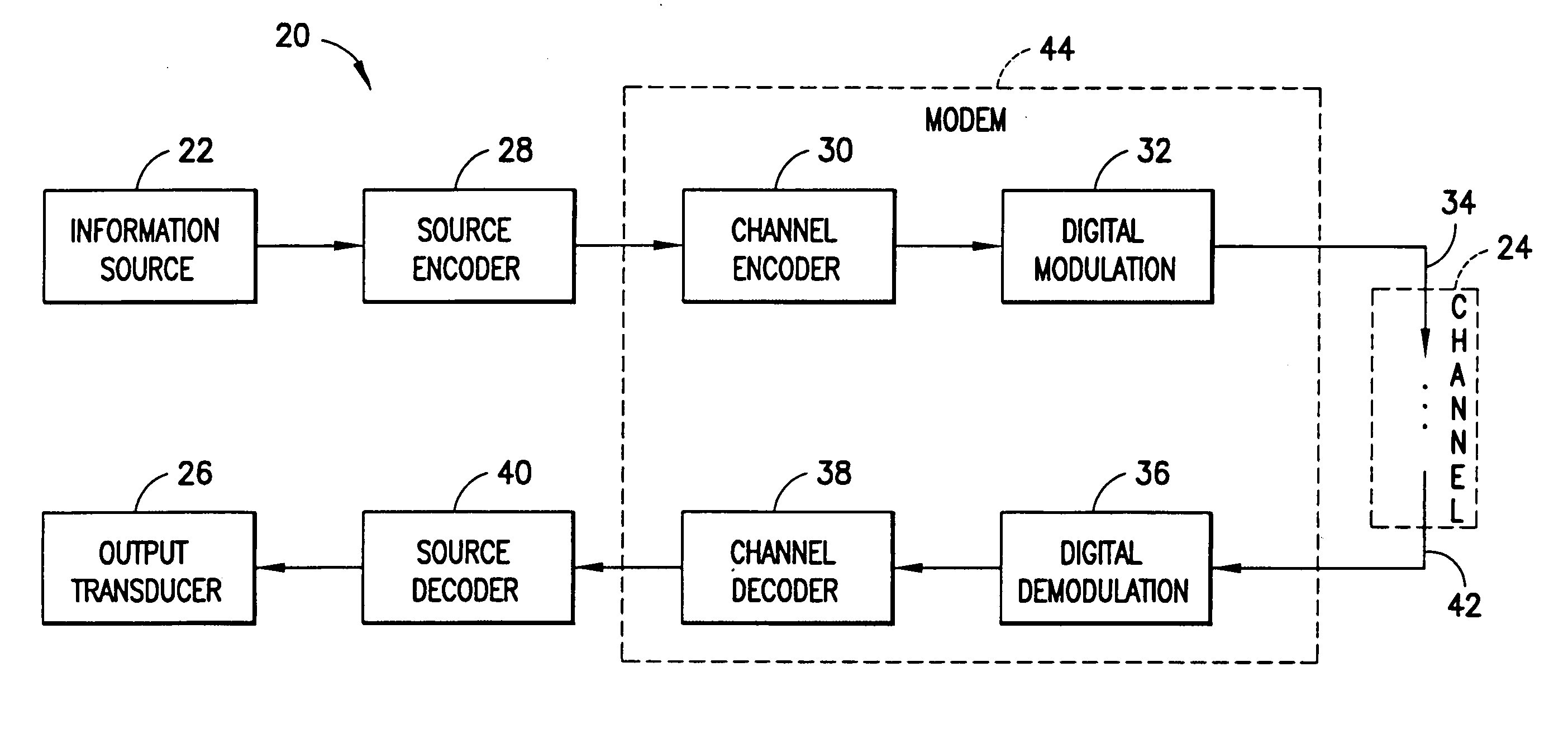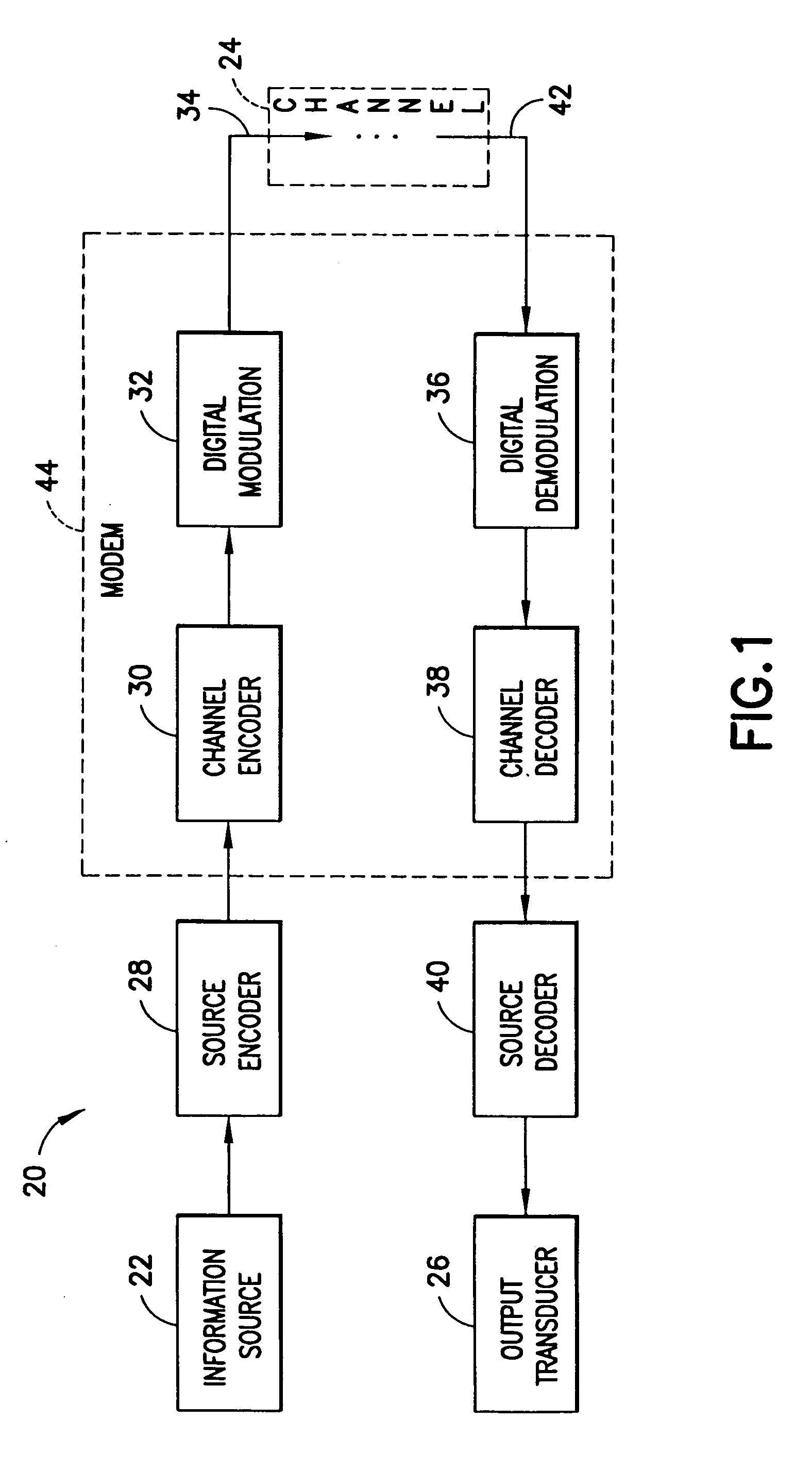Parallel DSP demodulation for wideband software-defined radios
a software-defined radio and parallel processing technology, applied in the direction of amplitude demodulation, duplex signal operation, digital transmission, etc., can solve the problems of limited digital processing speed of communication channels, filters operable only at reduced signal processing speed, and in the prior art, the use of filters is at the expense of reduced processing speed, so as to achieve little or no programmability and reduce clock rate
- Summary
- Abstract
- Description
- Claims
- Application Information
AI Technical Summary
Benefits of technology
Problems solved by technology
Method used
Image
Examples
Embodiment Construction
[0040] The ensuing description begins by showing the basic components of a communication system and of a modem. This is followed by further detail in the construction of a demodulator for use in either the communication system or in the modem. The description of the demodulator then continues with detail in: 1. Construction of block polyphase filters; 2. Digital Down-Conversion and Carrier NCO; and 3. Fractional Delay (or interpolation) Filter and Timing NCO.
[0041]FIG. 1 shows a basic communication system 20, wherein information, provided by a source 22, is communicated by a communication channel 24 to be outputted by a transducer 26. The information source 22, along with a source encoder 28, a channel encoder 30 and a digital modulator 32 are located on a transmit side 34 of the communication channel 24. The output transducer 26, along with a digital demodulator 36, a channel decoder 38 and a source decoder 40 are located on a receive side 42 of the communication channel 24.
[0042...
PUM
 Login to View More
Login to View More Abstract
Description
Claims
Application Information
 Login to View More
Login to View More - R&D
- Intellectual Property
- Life Sciences
- Materials
- Tech Scout
- Unparalleled Data Quality
- Higher Quality Content
- 60% Fewer Hallucinations
Browse by: Latest US Patents, China's latest patents, Technical Efficacy Thesaurus, Application Domain, Technology Topic, Popular Technical Reports.
© 2025 PatSnap. All rights reserved.Legal|Privacy policy|Modern Slavery Act Transparency Statement|Sitemap|About US| Contact US: help@patsnap.com



